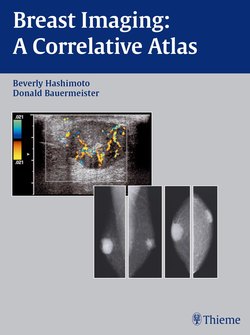Читать книгу Breast Imaging - Beverly Hashimoto - Страница 6
На сайте Литреса книга снята с продажи.
ОглавлениеPreface
This book is targeted for breast imagers who want to improve their interpretative skills by learning a method to analyze and integrate mammographic and sonographic findings. This method is based on developing familiarity with specific mammographic and sonographic image patterns. After a radiologist is familiar with these patterns, the imager can approach both mammographic and sonographic lesions in a systematic manner and reach a logical assessment. To facilitate this process, imaging sections 3–10 of this book are devoted to providing visual examples of these mammographic and sonographic patterns. Because most breast problems initially present with a mammographic examination, the sections are organized by specific mammographic findings according to the primary table of contents (Pattern Approach to Breast Imaging ). Each mammographic pattern is illustrated by a variety of benign and malignant entities. Furthermore, the introduction of each section schematically illustrates the clinical approach to analyzing the mammographic abnormality.
The second goal of this book is to emphasize the multidisciplinary nature of breast imaging. This multidisciplinary approach is emphasized by the secondary table of contents (Pattern Approach to Breast Sonography) that organizes the individual cases into sonographic patterns. Furthermore, the cases in this book include other imaging modalities such as magnetic resonance and various nuclear medicine techniques. The utility of these modalities is discussed in the context of common clinical problems that are illustrated in the individual imaging cases.
Sonographic examination of the breast has become more important in breast imaging. As equipment improves, imagers are able to see lesions that previously were not visible sonographically. This improved detection not only enhances one's confidence in finding malignancies earlier, but also in identifying benign lesions. However, the potentially important contribution of sonography is greatly hindered by inadequate equipment, suboptimal imaging technique, and inconsistent operator training. The third purpose of this book is to demonstrate the importance of high-resolution sonography in breast imaging. Several cases show images of the same lesion with both with highand low-resolution equipment. These cases also demonstrate the importance of utilizing high contrast, post-processing techniques in the detection of benign and malignant entities. Hopefully, this book will enhance the sonographic skills of breast imagers by encouraging the use of high quality, high-resolution equipment and optimal technique. Furthermore, by reviewing the sonographic appearance of the numerous breast abnormalities presented in this book, one can broaden one's visual sonographic experience.
The final objective of this book is to provide an atlas of a wide variety of pathologic entities within the breast. This book includes both unusual mammographic and sonographic appearances of common pathologies as well as examples of rare breast abnormalities. By grouping the pathologies within mammographic imaging patterns, one can use this book as a base for developing differential diagnoses.
In summary, I hope this book is used both as a quick reference guide to review the schematic work-up of a particular mammographic finding as well as a more detailed reference to study methods to optimize sonographic technique and integrate alternative imaging modalities.
Beverly E. Hashimoto
